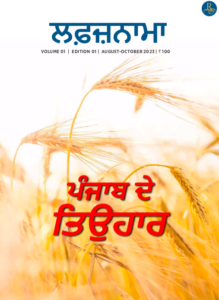THE AGE OF ‘ZOOMBOMBING’ AND ‘CAREMONGERING’

‘Afwah thi ki meri tabiyat kharab hai
Logon ne pooch pooch kar bimar kar diya’
Rahat Indori, who penned this romantic couplet, probably had no inkling that his innocent verses might in the times of COVID be classified as what is known as ‘scaremongering’. Preposterous, right?
The evolution process began two years ago with the WHO declaring the virus outbreak as ‘Public Health Emergency of International Concern’ that slowly graduated to a ‘pandemic’. Millennials, for the first time, faced unprecedented circumstances like ‘lockdown’ and ‘stay-at-home’ situations. The first phase of the lockdown witnessed a sudden boom in the exploration of ‘hidden talents’ right from playing instruments to kitchen gardening and what not. Acquiring culinary expertise by men, women and children was the most displayed of the aptitudes across social media platforms.
With the advent of the second phase of the pandemic, the world reeled under a pall of gloom. It was time for a stark reality check. Medical professionals took up cudgels against the virus and the workforce of the world geared up for an altogether different experience–WFH–work from home culture. While everyone was busy adjusting to the ‘new norms’ of life, the linguist was not to be left wanting in efforts. It was time for some ‘corona coinage’. Acronyms, abbreviations, nonce words and compounds adorned and sprinkled the ‘lingua franca’ and soon the newly acquired vocabulary became an everyday affair. In English, words like ‘scaremongering’ and ‘doomscrolling’– the spreading of frightening or ominous reports or rumours and describing the hypnotic state of endlessly reading grim internet news– ruled the roost while ‘covidiota’ and ‘coronaburro’ garnished Spanish, both of which are used to ‘poke fun at people who disregard public health advice’.
While words like ‘coronapocalypse’, ‘coronageddon’, ‘coronacation’, ‘coronababies’, ‘covidivorce’ and ‘zoom fatigue’ were self-explanatory, another method of using shortened forms was adopted to create new ones. Check this– ‘Coronavirus’ was shortened to ‘Corona’ which was further reduced to ‘rona’ to save time and energy. Australian English reduced ‘quarantine’ to ‘quaz’. However, among all these coinages the cherry on the cake belongs to two special words– Zoombombing and Caremongering– one for its scariness and the other for its cheeriness.
‘Zoombombing’ owes its origin to ‘photobombing’ and was enough to scare people around the globe. With the Zoom platform jumping in as one of the pioneers and a savior during the pandemic, netizens lapped it up to organize virtual meets– teachers held their classes and lectures; office staff held their work-related and staff meetings; world leaders discussed administrative and policy related matters; even birthday parties and anniversary celebrations found their route through virtual platforms. In the middle of these meetings or celebrations, an uninvited guest suddenly disrupts the peaceful scenario with ‘violent, obscene or offensive messages or images. Well, this is what ‘zoombombing’ is all about. It may sound like a casual affair and something hilarious but it became an actual nightmare for many a teacher and innocent users.
‘Caremongering’ on the other hand is a hearty and warm gesture that originated in contrast to the word ‘scaremongering’. It presents an alternative picture in the scare-ridden environment created by spreading rumours and triggering panic among people. The term that inhabits Canadian and Indian English, became a phenomenon in a matter of days with the community engaging in providing solutions to health and social needs-related issues through social media platforms. What could be better than such endearing words and assurances in a world which is trying to gain a foothold in the deluge of half-baked truths and distorted facts?
‘Kuchh baton ke matlab hain, kuchh matlab ki batein hain
Jab se farq samjha hai, zindagi aasaan ho gayi’ (Gulzar)















